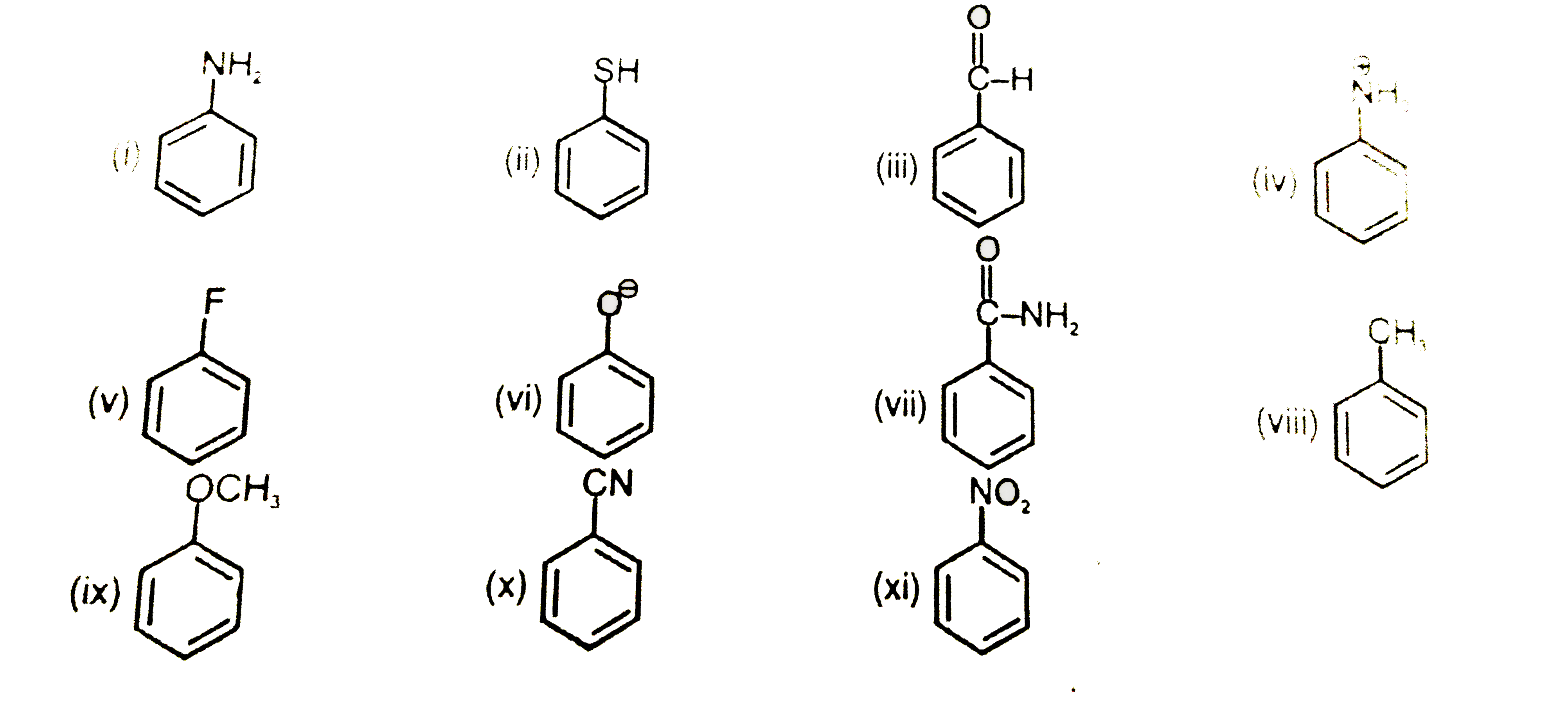The reaction sequence below shows how a methyl group on a benzene ring can be replaced by an amino group. Supply the missing reagents and intermediates.

Text Solution
An acid chloride results from treatment of A and B. Therefore, A is likely to be a carboxylic acid, a conclusion that is consistent with the oxidizing conditions that led to formation of A from methylbenzene (toluene). B must be a reagent that can lead to an acid chloride. Thionyl chloride or PCl5 would suffice. Overall, C, D, and E involve introduction of the nitrogen atom and loss of the carbonyl carbon. This sequence is consistent with preparation of an amide followed by a Hofmann rearrangement.

|
Topper's Solved these Questions
- AMINESBOOK - MS CHOUHANCHAPTER - AMINESEXERCISE - SINGLE CORRECT CHOICE TYPE
12 Videos
- AMINESBOOK - MS CHOUHANCHAPTER - AMINESEXERCISE - Level 2
1 Videos
- ALKENES AND ALKYNES IBOOK - MS CHOUHANCHAPTER - ALKENES AND ALKYNES IEXERCISE - Additional Objective Questions (Multiple Correct Choice Type)
2 Videos
- AMINO ACIDS AND PROTEINSBOOK - MS CHOUHANCHAPTER - AMINO ACIDS AND PROTEINSEXERCISE - Additional Objective Questions (Integer Type)
1 Videos
Similar Questions
Knowledge Check
The methyl group in benzene ring is :
AOrtho directingBOrtho and meta directingCPara directingDOrtho and para directingAlcohols can be replaced by -Cl group by the following reagents :
ACl2BSOCl2CPCl5DHCl+ZnCl2Alcohols can be replaced by-Cl group by the followin reagents:
ACl2BSOCl2CPCl5DHCl+ZnCl2
The number of hydrogen atoms that can be replaced by methyl groups in diborane is
View SolutionHow many isomers are possible when three hydrogen atoms in the benzene ring are replaced by three same substituent groups ?
View SolutionAromatic diazonium group can be replaced by various groups. Identify the correct reagent and group
View SolutionMethyl group attached to benzene can be oxidised to carboxyl group by reacting with :
View SolutionIf NO reacts with [Cr(CO)6] how many CO groups can be replaced by NO :
View Solution

